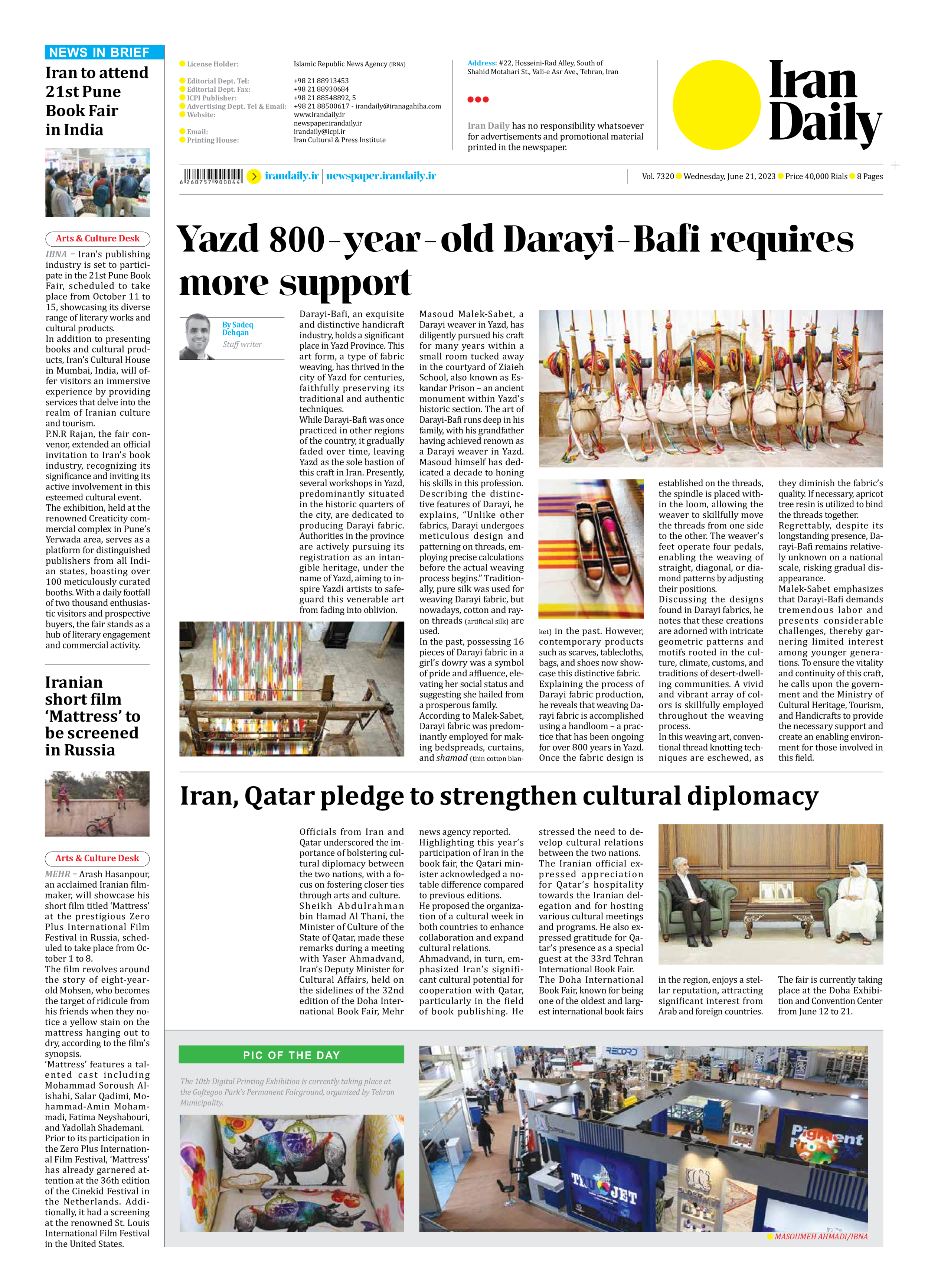
Yazd 800-year-old Darayi-Bafi requires more support
By Sadeq Dehqan
Staff writer
Darayi-Bafi, an exquisite and distinctive handicraft industry, holds a significant place in Yazd Province. This art form, a type of fabric weaving, has thrived in the city of Yazd for centuries, faithfully preserving its traditional and authentic techniques.
While Darayi-Bafi was once practiced in other regions of the country, it gradually faded over time, leaving Yazd as the sole bastion of this craft in Iran. Presently, several workshops in Yazd, predominantly situated in the historic quarters of the city, are dedicated to producing Darayi fabric. Authorities in the province are actively pursuing its registration as an intangible heritage, under the name of Yazd, aiming to inspire Yazdi artists to safeguard this venerable art from fading into oblivion.
Masoud Malek-Sabet, a Darayi weaver in Yazd, has diligently pursued his craft for many years within a small room tucked away in the courtyard of Ziaieh School, also known as Eskandar Prison – an ancient monument within Yazd’s historic section. The art of Darayi-Bafi runs deep in his family, with his grandfather having achieved renown as a Darayi weaver in Yazd. Masoud himself has dedicated a decade to honing his skills in this profession.
Describing the distinctive features of Darayi, he explains, “Unlike other fabrics, Darayi undergoes meticulous design and patterning on threads, employing precise calculations before the actual weaving process begins.” Traditionally, pure silk was used for weaving Darayi fabric, but nowadays, cotton and rayon threads (artificial silk) are used.
In the past, possessing 16 pieces of Darayi fabric in a girl’s dowry was a symbol of pride and affluence, elevating her social status and suggesting she hailed from a prosperous family.
According to Malek-Sabet, Darayi fabric was predominantly employed for making bedspreads, curtains, and shamad (thin cotton blanket) in the past. However, contemporary products such as scarves, tablecloths, bags, and shoes now showcase this distinctive fabric.
Explaining the process of Darayi fabric production, he reveals that weaving Darayi fabric is accomplished using a handloom – a practice that has been ongoing for over 800 years in Yazd. Once the fabric design is established on the threads, the spindle is placed within the loom, allowing the weaver to skillfully move the threads from one side to the other. The weaver’s feet operate four pedals, enabling the weaving of straight, diagonal, or diamond patterns by adjusting their positions.
Discussing the designs found in Darayi fabrics, he notes that these creations are adorned with intricate geometric patterns and motifs rooted in the culture, climate, customs, and traditions of desert-dwelling communities. A vivid and vibrant array of colors is skillfully employed throughout the weaving process.
In this weaving art, conventional thread knotting techniques are eschewed, as they diminish the fabric’s quality. If necessary, apricot tree resin is utilized to bind the threads together.
Regrettably, despite its longstanding presence, Darayi-Bafi remains relatively unknown on a national scale, risking gradual disappearance.
Malek-Sabet emphasizes that Darayi-Bafi demands tremendous labor and presents considerable challenges, thereby garnering limited interest among younger generations. To ensure the vitality and continuity of this craft, he calls upon the government and the Ministry of Cultural Heritage, Tourism, and Handicrafts to provide the necessary support and create an enabling environment for those involved in this field.







